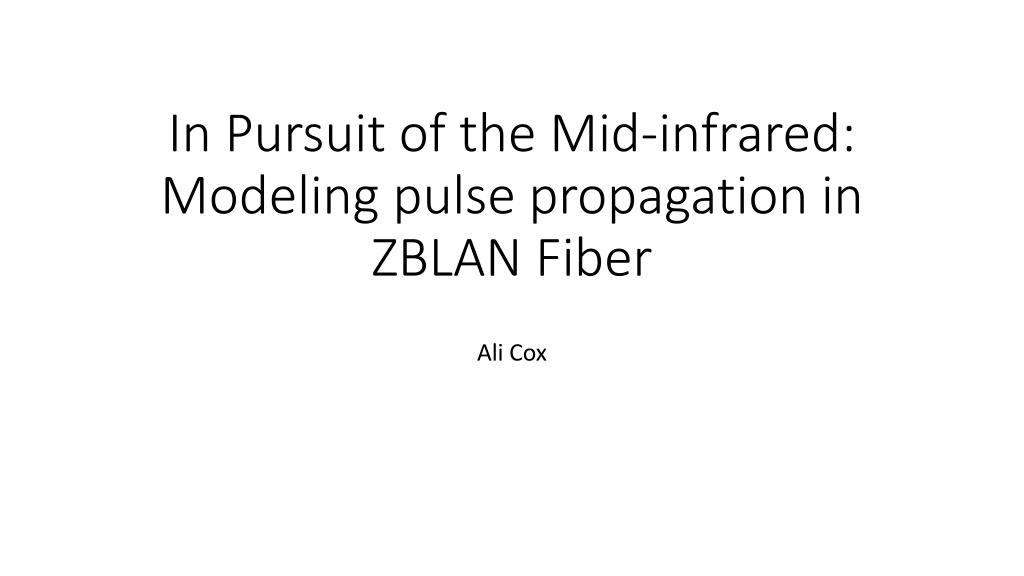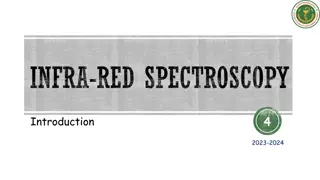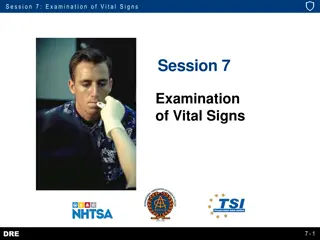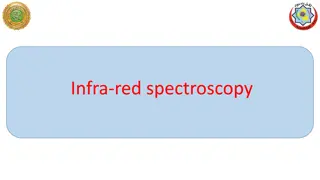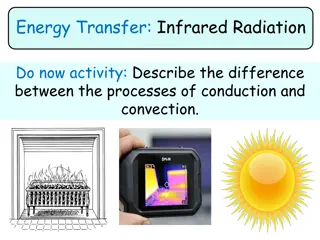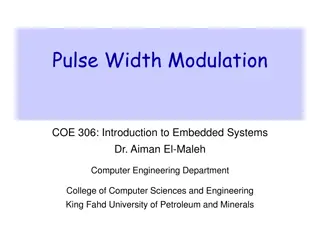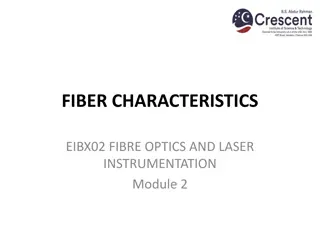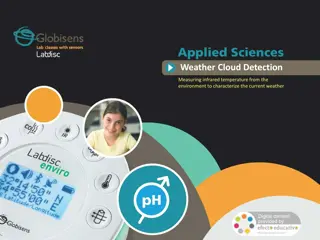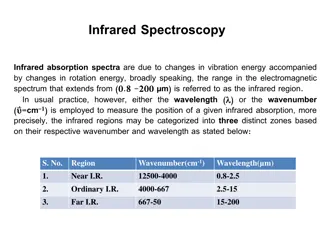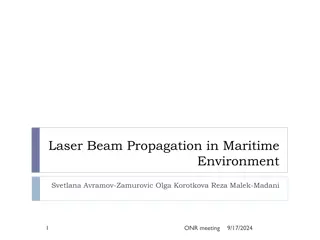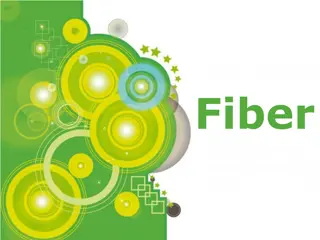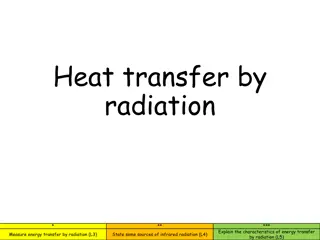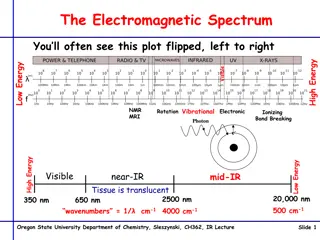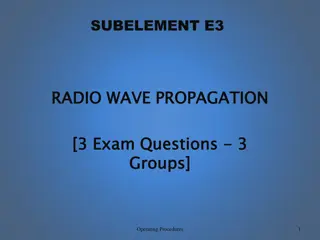Exploring Mid-Infrared Pulse Propagation in ZBLAN Fiber
In the pursuit of mid-infrared light for gas detection applications, this study delves into modeling pulse propagation in ZBLAN fiber, a magical material that allows efficient frequency transformation without light absorption. By utilizing Stimulated Raman Scattering, the process of energy transfer from high to low frequency is investigated, offering insights into pulse evolution dynamics in ZBLAN fiber. Funding from NSF and AFOSR, along with support from the LUMOS group and guidance from Prof. Washburn, contribute to the advancement of this research.
Download Presentation

Please find below an Image/Link to download the presentation.
The content on the website is provided AS IS for your information and personal use only. It may not be sold, licensed, or shared on other websites without obtaining consent from the author. Download presentation by click this link. If you encounter any issues during the download, it is possible that the publisher has removed the file from their server.
E N D
Presentation Transcript
In Pursuit of the Mid-infrared: Modeling pulse propagation in ZBLAN Fiber Ali Cox
Acknowledgements This work is partially funded by the National Science Foundation (NSF) and the Air Force Office of Scientific Research (AFOSR) through NSF grant number PHYS-1461251. I would additionally like to thank the LUMOS group for their support, and Professor Washburn for his guidance throughout the program.
Motivation We want mid-infrared light (3?m - 5?m) primarily because of its applications in absorption spectroscopy. There are many gases that absorb light in this range. So having a tightly spaced frequency comb in the mid-infrared would be quite nice allowing us to do things like really sensitive gas detection.
How to make a pulsed laser at 3 microns Option 1: Find a magical substance that both lases and efficiently mode locks around that wavelength. Option 2: Find a magical fiber that uses non-linear optical effects to turn a regular pulsed laser into a 3 micron pulsed laser. We choose option 2.
Why does the fiber have to be magical? A normal fused silica fiber is also capable of frequency transformation. The problem is that for the mid-infrared range, silica is highly absorptive, so doesn t let through much of the light it converts. ZBLAN does not absorb 3 micron light, providing the needed magic.
The Frequency Conversion Process In a molecular medium, a pair of light waves can resonate with the molecular vibration modes in such a way that energy is transferred from high frequency to low: ?? ?? ?? ?? ??= ?? ?? This is called Stimulated Raman Scattering
Raman Scattering in ZBLAN Fiber (a) is a map of the rate at which energy is transferred from one frequency to each frequency below it. The black gain curve is a sum of many simple curves that correspond to vibrational modes of ZBLAN molecules. The impulse response function (b) corresponding to the Raman gain spectrum tells us everything about how a pulse is affected by Raman scattering. So let s go simulate some pulse evolutions! Yan et al. J. Opt. Soc. Am. B
Not so fast There are other effects that must be incorporated into the simulation to get a realistic picture of pulse propagation through ZBLAN fiber. There are two significant ones: Self-Phase Modulation Dispersion Amplitude time Different frequency components travel at different group velocities As the pulse travels, the phase of the carrier wave is shifted by an amount proportional to the intensity.
How is it possible to consider all these radically different effects at the same time? The various effects are manifested in the polarization: ???????????= ?0?? Any optical effect must be describable by Maxwell s wave equation: (1)? 2? ?2? = ??2(?0? + ?) ????= ?0?3? ??2 2?? ??????= ?0?3? ?(? ? ) ?(? )
Watering down the Equation Approach: Separate ? into its envelope and oscillatory parts and try to get an equation that describes the envelope only. ? ?,? = ? ?,? ?? ?0? ?? When this form of ? is plugged into the equation, insignificant second derivatives can be ignored to give a first order ODE of the envelope: ?(? ?,? ? ???) ?? = ??? ?0? ????? ?(?,?) ?(? ? ) ? (?,? )2??
Solving the envelope equation for each effect individually ????,??????= 0 ???????????,??????= 0 As expected, there is no change in spectrum envelope, but broadening in the time envelope. In the case of self-phase modulation, the spectrum broadens while the time envelope does not change.
Testing for Solitons (Still no Raman effect) Soliton order: 1 Soliton order: 2
Working so far, time to include Raman Scattering As we were hoping for, a frequency shift is seen when a solitonic pulse undergoes Stimulated Raman Scattering. Raman effect is amplified by a factor of 1000 to get results in short propagation distance.
Pushing the limits Initial pulse is at 2 microns. Want to get 3 microns. This means that we need a frequency shift of c/2?m c/3?m = 49 THz When Raman effect is amplified by another factor of 5, a negative frequency shift of about 36 THz is seen. Under these conditions, 25% of the initial peak power is retained.
Conclusions Future Works The conducted simulations show that ZBLAN fiber is capable of significant frequency shift towards the mid-infrared wavelengths. While resonance losses and pulse spreading cannot be neglected, the percentage of transmission appears reasonable. Simulate pulse propagation through much longer fiber lengths without enhancing the Raman effect to get more realistic results. Look for ideal initial pulse parameters to get as close as possible to the mid-infrared range.
Last Minute!: A negative frequency shift of 50 THz is observed when second order soliton is ejected as the initial pulse.
